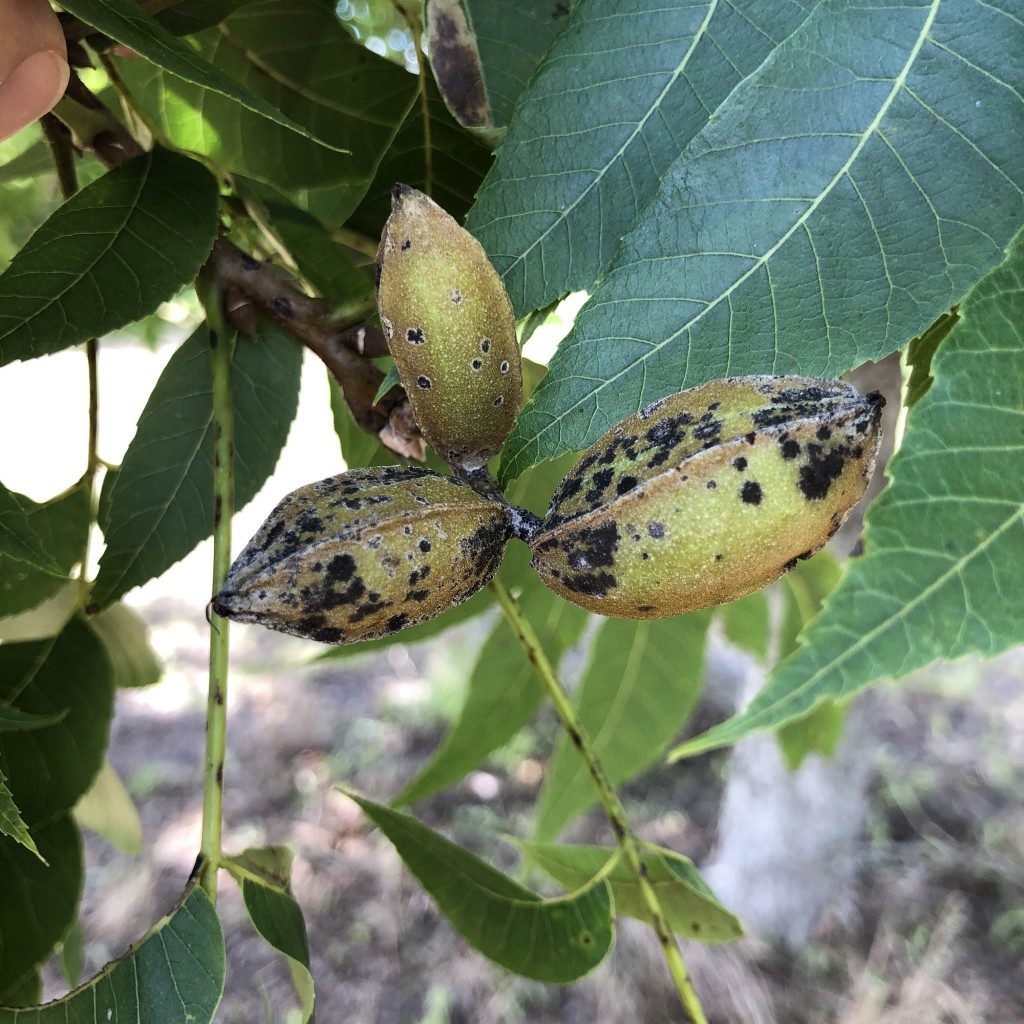By Clint Thompson

Two weeks. That is the maximum amount of time pecan growers have to apply fungicide sprays to trees most susceptible to scab disease.
Lenny Wells, University of Georgia Extension pecan specialist, discusses the spray window that farmers have to keep certain varieties free of the disease.
“From this point on, growers need to stay really tight on their spray schedules. On susceptible varieties, they don’t need to go more than two weeks on something like Desirable or Pawnee or anything that scabs easily,” Wells said. “They don’t need to go more than two weeks, even in dry weather. We’ll get enough fog and humidity and things like that on those susceptible varieties to generate some scab even if it’s not raining.
“The biggest challenge has been trying to get sprays on in between the rains and the wind. The wind has been like April the last few weeks. That’s made it hard to get everything covered. Most growers have done a good job.”
Scab is a fungal disease that infects the leaves or nuts of pecan trees. If it impacts the nut early enough, scab can cause the nut to blacken and fall from the tree. It thrives on trees that have received moisture. Some growers may make between 10 and 12 fungicide applications during an average year to fight scab. The more it rains during the summer, the more applications a grower is likely to make.
The fungal pathogen that causes scab overwinters in the tree as lesions on stems and old nut shucks that remain in the tree after harvest. When temperatures begin to warm in the spring, the fungus becomes active and starts to produce new spores that are spread by rain and wind.
Wells estimates that the pecan crop looks strong on younger trees that are 20-to-30-years-old and under. He said older trees are “very hit and miss,” at this point in the production season.









